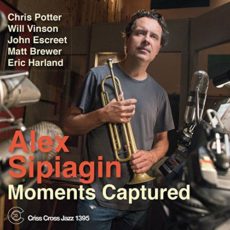
Daily Dose Of Jazz…
John Simmons was born June 14, 1918 in Haskell, Oklahoma and played trumpet at first, but a sports injury prevented him from continuing on the instrument. He picked up bass instead, landing his first professional gigs a mere four months after starting on the instrument. Early on he played with Nat King Cole and Teddy Wilson in 1937 before moving to Chicago, Illinois where he played with Jimmy Bell, King Kolax, Floyd Campbell, and Johnny Letman.
1940 saw him playing with Roy Eldridge and then spent 1941 to 1942 playing at various times with Benny Goodman, Cootie Williams, and Louis Armstrong. From 1942 to 1943 John played in the CBS Blue Network Orchestra, then played with Duke Ellington, Eddie Heywood and Illinois Jacquet through 1946, in addition to doing much studio work.
Simmons recorded with Lester Young, James P. Johnson, Hot Lips Page, Ben Webster, Billie Holiday, Sidney DeParis, Sid Catlett, Coleman Hawkins, Don Byas, Benny Carter, Bill DeArango, Al Casey, Ella Fitzgerald, Charles Thompson, Milt Jackson, Buddy Rich, Tadd Dameron, Matthew Gee, Maynard fErguson and Thelonious Monk among numerous others.
Much of the 1950s Simmons continued to work as a studio musician recording with Erroll Garner, Harry “Sweets” Edison, Art Tatum, and the Rolf Ericson/Duke Jordan band. One of his last associations was with Phineas Newborn in 1960 before ill health forced his retirement not long afterwards. Bassist John Simmons passed away on September 19, 1979 in Orange, New York.
Sponsored By

![]()
#preserving genius
More Posts: bass

Daily Dose Of Jazz…
Georges Arvanitas was born on June 13, 1931 in Marseille, France, to Arvanite Greek immigrants from Constantinople, Turkey. At age four he began studying piano and initially trained as a classical pianist. Influenced by Bud Powell and Bill Evans he switched to jazz in his teens.
At 18 he was called up for military duty and finding himself stationed in Versailles and his proximity to Paris, he was exposed to the city’s thriving postwar jazz culture. Soon he was moonlighting at clubs alongside American musicians such as Don Byas and Mezz Mezzrow. After completing his service, Arvanitas relocated permanently to Paris where he led the house band at the Club St. Germain before he graduated to the city’s premier jazz venue, the legendary Blue Note. There he played with Dexter Gordon and Chet Baker. As his notoriety grew, he became a leader and with bassist Doug Watkins and drummer Art Taylor recorded 3 A.M. in 1963. The trio would go on to win the Prix Django Reinhardt and the Prix Jazz Hot for the album.
Georges spent half of 1965 in New York City collaborating with saxophonist Yusef Lateef and trumpeter Ted Curzon on The Blue Thing and the New Thing for Blue Note. A year later he returned stateside on tour with trombonist Slide Hampton’s big band. A respected session player earning the nickname Georges Une Prise (One-take George) for his reliable efficiency and mastery and worked closely with Michel Legrand.
Best remembered for a series of LPs he cut with bassist Jacky Samson and drummer Charles Saudrais, the trio endured from 1965 to 1993. He was received the Chevalier des Arts et des Lettres award in 1985. Unfortunately his failing health forced him to retire from music in 2003 and two year later pianist and organist Georges Arvanitas passed away in Paris on September 25, 2005.

#preserving genius

Daily Dose Of Jazz…
Monika Herzig was born June 12, 1964 in Germany and studied piano in her childhood. After receiving a scholarship in 1987 from the pedagogical institute in Weingarten, Germany for a one-year exchange program at the University of Alabama. Arriving in the United States in 1988 with one suitcase and a guitar, she went on to complete her Doctorate in Music Education and Jazz Studies at Indiana University, where she is a faculty member.
She recorded with the jazz fusion group BeebleBrox and has produced four albums as leader of the Monika Herzig Acoustic Project. Peace on Earth was released locally in Indianapolis, Indiana in 2008 and was released nationally in 2009 on the Owl Studios label.
She was awarded 1994 Best Original Composition, Let’s Fool One by DownBeat, was a two times finalist with BeebleBrox in 1994–1996, was a winner with Oliver Nelson Jr., WTPI Winter Jazzfest Competition in Indianapolis, and in 2000, 2003 and 2005 was the recipient of the Individual Artist Grant from the Indiana Arts Commission. Pianist Monika Herzig continues to perform, record and tour.
Sponsored By

Voices From The Community
![]()
#preserving genius
More Posts: piano

Daily Dose Of Jazz…
Alex “Sasha” Sipiagin was born June 11, 1967 in Yaroslavl, Russia and began learning to play the trumpet at the age of twelve. He studied at the Moscow Music Institute and the Gnessin Conservatory in Moscow where he received his Baccalaureate. In 1990 he competed in the International Louis Armstrong Competition sponsored by the Thelonious Monk Institute in Washington, D.C. winning top honors. Moving from Russia to the United States in 1991 and began his career shortly thereafter.
His first gigs were with the Gil Evans Band and George Gruntz Concert Jazz Band and soon became a favored player for various bands including the Gil Goldstein’s Zebra Coast Orchestra, drummer Bob Moses’ band Mozamba, the Mingus Big Band, Mingus Dynasty, the Mingus Orchestra, the Dave Holland Big Band, Sextet and Octet groups.
He has recorded and performed with Michael Brecker, Mulgrew Miller, Eric Clapton, Dr.John, Aaron Neville, Elvis Costello, Michael Franks, Dave Sanborn, Deborah Cox, legendary producer Phil Ramone and Gonzalo Rubalcaba, among others. Alex has recorded fifteen albums as a leader, for the most part on the Criss Cross Jazz label.
He is a founding member of the collective Opus 5, along with Seamus Blake, David Kikoski, Boris Kozlov and Donald Edwards. Trumpeter and flugelhornist Alex Sipiagin, who teaches at the Groningen Prince Claus Conservatory, Academy of Music, Basel, Switzerland as well steady professorship at NYU and continues to compose, perform and record.
Sponsored By
www.whatissuitetabu.com
![]()
#preserving genius
More Posts: flugelhorn,trumpet

Daily Dose Of Jazz…
Punch Miller was born Ernest Miller on June 10, 1894 in Raceland, Louisiana and learned to play the trumpet as a child. He was also known as Kid Punch Miller in New Orleans, Louisiana, where he was based from 1919 to 1927,
He moved to Chicago, Illinois and worked with various bands, including Jelly Roll Morton and Tiny Parham, as well as appearing on a number of recordings. His lifestyle and the decline of Dixieland or New Orleans jazz led to his return to mostly doing festivals and falling out of the limelight. This changed with the rising importance of the Preservation Hall Jazz Band and he returned to national attention.
He returned to New Orleans, playing at Preservation Hall and leading a band under his own name, in addition to playing with other groups. In 1963 he toured Japan with the clarinetist George Lewis.
Trumpeter Punch Miller, who was the subject of the television documentary Til the Butcher Cuts Him Down, passed away on December 2, 1971 in New Orleans.
#preserving genius
More Posts: trumpet



